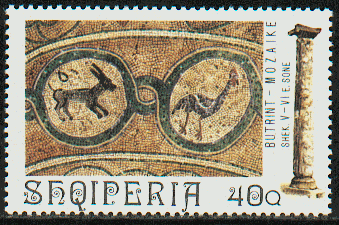

Butrint has been inhabited since prehistoric times. Under the successive rule of the Romans, Byzantines, Venetians, and Ottoman Turks, it thrived as a center of trade. The city was abandoned in the late Middle Ages after marshes formed in the area. The present archaeological site is a repository of ruins representing each period in the city's development.
Located in the Drinos river valley in southern Albania, Gjirokastra is a well-preserved example of an Ottoman town originally built in the 13th century. It also contains a number of examples of kule, a type of Turkish tower house dating from the 17th century. The kule has a tall basement, a first floor for use in the cold season, and a second floor for the warm season. The addition of the city center of Berat was made to the listing in 2008.
For more links see Joint listing with Slovakia.
Joint listing with Albania, Austria, Belgium, Bosnia and Herzegovina, Bulgaria, Croatia, Czechia, France, Germany, Italy, Macedonia, Poland, Romania, Slovakia, Slovenia, Spain, Switzerland, and Ukraine. These are the largest remaining virgin forests of the European beech (Fagus sylvatica). They also hold the largest and tallest beech specimens in the world. This site originally consisted of ten separate components along an 185 km axis from the Rakhiv Mountains and the Chornohirskyi Range in the Ukraine, west along the Polonynian Ridge, to the Bukovske Vrchy and Vihorlat Mountains in Slovakia. The listing was extended in 2011 to include 5 Ancient Beech forests in Germany, further extended in 2017 to include more forests in 10 countries, and further extended in 2021.
The part of Lake Ohrid located in Northern Macedonia and its hinterland, including the town of Ohrid, has been inscribed on the World Heritage List since 1979. The site was expanded in 2019 to include the the north-western, Albanian, part of Lake Ohrid, the small Lin Peninsula and the strip of land along the shoreline that connects the peninsula to the Macedonian border. The peninsula is the site of the remains of an Early Christian church founded in the middle of the 6th century.
Lynn Salmon <>{
Last updated: August 2, 2021